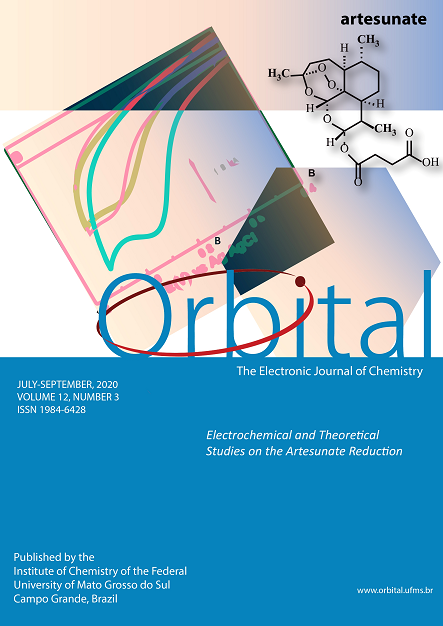- artesunate,
- artemisinin,
- electrochemical,
- endoperoxide bridge,
- irreversible reduction
- LUMO-HOMO ...More
Copyright (c) 2020 Orbital: The Electronic Journal of Chemistry

This work is licensed under a Creative Commons Attribution-NonCommercial-NoDerivatives 4.0 International License.
Abstract
Malaria is the most devastating tropical disease in the world and this scenario is worsened by the absence of effective treatment. However, the plasmodium resistance to artemisinin does not show clinical relevance. The drug mechanism of action is associated to the endoperoxide moiety breakage. Artesunate is a semi-synthetic derivative of artemisinin and its absorption is facilitated due to its higher solubility in water. As a sesquiterpene lactone, artesunate can be electrochemically reduced in aqueous media on the glassy carbon electrode, having been studied by cyclic voltammetry, square wave voltammetry and chronoamperometry. The artesunate voltammetric reduction is diffusion-controlled and significantly irreversible. Its reduction is pH-independent, but from pH = 6.0 the cathodic current values increase in alkaline media, indicating that the proton-equilibrium occurs after the electron transfer step. The an values calculated vary from 0.30 to 0.37, leading to the 0.0975 s-1 value for ks. From the chronoamperometric data, two electrons (1.9 ± 0.4) are involved in the reduction process, being confirmed by the exact number of electrons obtained for artemisinin (1.9 ± 0.2). According to these results and computational findings, both drugs have the same reduction mechanism with the breakage of the endoperoxide bridge and consequent diol-derivative formation followed by the deoxy analog stabilization through the existence of a set of reactions involving protonation and charge transfer steps on the electrode surface.

